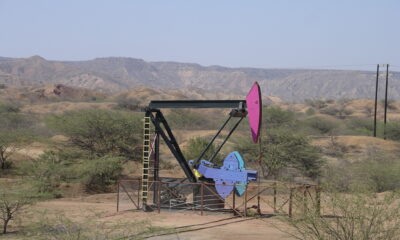Civilization
Building the Global Nuclear Energy Order Book

The outlook for nuclear power is bright on the world stage. Global demand for clean nuclear energy is higher than we have ever seen. The U.S. and 20 allied nations pledged to triple global nuclear energy capacity by 2050 at COP28, and a multinational survey reaffirmed last year — the world wants new nuclear.
How to expand global nuclear energy capacity
In Washington, D.C., bipartisan support for nuclear energy has never been greater. Propelled by the House passing the ADVANCE Act 393-13 this month and momentum for passage in the Senate, Congress deserves some credit this year for working to help speed up the deployment of next-generation reactors, fueling hope for an American future powered by clean energy.
This support is promising, but masks a concerning trend. While the U.S. leads the world in the development of innovative nuclear technologies, the U.S. has fallen behind China and Russia. As of May 2024, Russia and China collectively have 29 commercial reactors under construction. The U.S. has zero.
The prospect of reinvigorating production in the U.S. is exciting, but we have to think bigger to realize the promise of the next generation of nuclear energy — and now is the moment to capitalize. So, how do we get it done?
Private companies need to secure the necessary investments and build the infrastructure required for their technologies. Interest in next-generation reactors is already high and is only expected to grow, so we need new sources of funding to meet the moment. Throughout the history of nuclear innovation, first movers have been critical to attaining the “proof of concept,” and new reactors are no different. Once the potential of these technologies is realized, the order book for energy users can follow, and more capital will be available to developers.
Non-traditional customers: end-users of electricity
Due to the need for more reliable energy, the nuclear industry is seeing significant interest from both traditional and non-traditional customers. Utilities continue to consider adding nuclear energy capacity, and data centers and industrial customers are also considering new nuclear. For example, the partnership between X-energy and Dow in Seadrift, Texas, demonstrates the diverse applications of nuclear energy, as the proposed reactor will replace retiring systems to produce clean energy for the chemical facility. With nuclear power, industrial companies can continue to utilize reliable and affordable energy for their operations, cleanly. The project came to fruition with the support of the Department of Energy’s Advanced Reactor Demonstration Program (ARDP), a prime example of how federal government and private industry partnerships can make advanced nuclear technology a reality. In addition to X-energy, the DOE is partnering with TerraPower, which just submitted its construction permit to the NRC, to build its first reactor in Kemmerer, Wyoming.
To meet demand and compete in the market, the industry must build an order book to encourage commercial investment in new nuclear projects. Expanding to global customers bolsters the U.S. market and encourages international trade, but we cannot export technology we are not building here. With a diverse and more robust customer base, companies can attract significant investments while achieving cost reductions.
Russian and Chinese influence
However, it is important to make sure that U.S. companies can compete on the global stage to counter the growing influence of Russia and China. Updates to civil nuclear export regulations, developing an export strategy and increasing access to financing from entities like the U.S. Export-Import Bank and International Development Finance Corporation will be critical. Partnering with allied nations and supporting the development of technical expertise in countries that are interested in building these new designs will be needed as well.
Building a robust order book and increasing commitments from both domestic and international customers can help build momentum to commercialize next-generation facilities. The U.S. can finish what it started: ensuring the deployment of new nuclear projects will provide clean, reliable and affordable energy globally.
This article was originally published by RealClearEnergy and made available via RealClearWire.
-

 Civilization3 days ago
Civilization3 days agoMifepristone legal to distribute again
-

 Executive4 days ago
Executive4 days agoDemocrats are enemies of the people
-

 Education2 days ago
Education2 days agoWaste of the Day: Harvard, Brown, More Take Foreign Gifts From “State of Palestine”
-

 Civilization5 days ago
Civilization5 days agoAlito – a target, and on target
-

 Constitution2 days ago
Constitution2 days agoBump stocks perfectly legal – SCOTUS
-

 Civilization3 days ago
Civilization3 days agoGood Trump, Bad Trump
-

 Constitution1 day ago
Constitution1 day agoAre Americans Truly Grateful? If They Were, They Would Not Tolerate Injustice
-

 Civilization2 days ago
Civilization2 days agoAmerican Flag Officers Don’t Get It: Sliding Civil-Military Relations Norms















